Sow Nymphs: [Cultivation, Irrigation, Care and Problems]

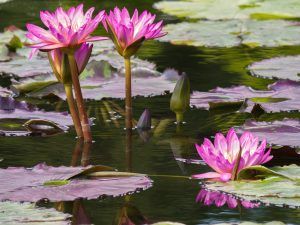 The Nymph is an aquatic plant of great splendor belonging to the Nymphacea or Nymphacea family, a word from the Greek Nymphaia that recalls when the Gods dared to transform a nymph into a beautiful swimming plant.
The Nymph is an aquatic plant of great splendor belonging to the Nymphacea or Nymphacea family, a word from the Greek Nymphaia that recalls when the Gods dared to transform a nymph into a beautiful swimming plant.
This genus comprises about 50 species of rhizomatous aquatic plants, which mostly come from the tropical areas of the northern hemisphere of the planet.
Only the most popular variety, the white nymph, has about 1,500 versions or species scattered throughout the world. The largest variety of white nymph on the planet is the Amazonian Nymph or Victoria Regia. It lives in jungle regions of the Amazon, in countries such as Brazil, Colombia, Venezuela, Peru and Bolivia.
It is also known as White Water Lily, Rose of Venus and Rose of Love.
Important points when sowing nymphs:
- When to sow?Spring is the best time.
- Where to sow? In ponds, water pots and gardens with artificial ponds.
- How to prepare the land? Compost for aquatic plants is ideal.
- How do we water?The water must always be kept clean, the pond water must be changed periodically
- What pests and diseases does it have?Suffers insect attacks, especially black lice.
What characteristics do nymphs have?
In Egypt it is worshiped, because the plant is considered a passport between the world of the living and the dead. Present in the temperate regions of Europe and in most of the countries of North Africa, its favorite habitat is lagoons and ponds.
The nymphs, in any of their versions, have a fleshy horizontal rhizome and take root towards the bottom of the water where they live, which reach between 4 to 5 meters long. It also has beautiful, large, bright green cordate leaves that float harmoniously in the water, along with long petioles.
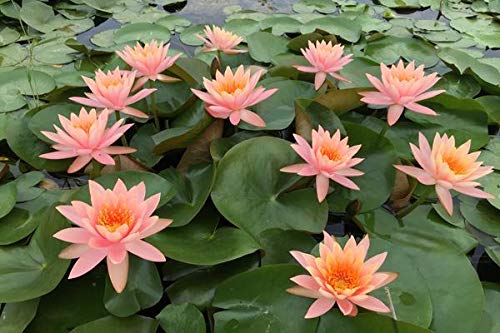
The flowers are bowl- or star-shaped, hermaphrodite, and grow solitary. They are white or pink in color and have a corolla of about 50 petals and a calyx of four sepals. Their sizes vary between a height of 0.5 to 2 meters, it all depends on the variety.
The leaves grow from 10 to 30 cm, heart-shaped and in two shades: shiny light green on the upper part and reddish brown on the underside. The stamens of the white nymph are very prolific. They have yellow antennae and are spread by seed.
When to sow the nymphs?
In spring it is ideal to plant nymphs in a pot.
Where to plant the nymphs?
This plant should only be grown in ponds, pools, swamps and ponds. Its predilection for warm waters is high, but it can tolerate low temperatures. In the gardens it is very feasible to have any variety of nymph, as long as it is in an aquatic area.
His appeal will be huge in the eyes of all onlookers.
in pots
In the case of planting in pots, at the time of planting it is necessary to clean the rhizome very well after extracting the specimen. Then it is necessary to cut it into several pieces with the root, thanks to the support of tools very well disinfected in alcohol.
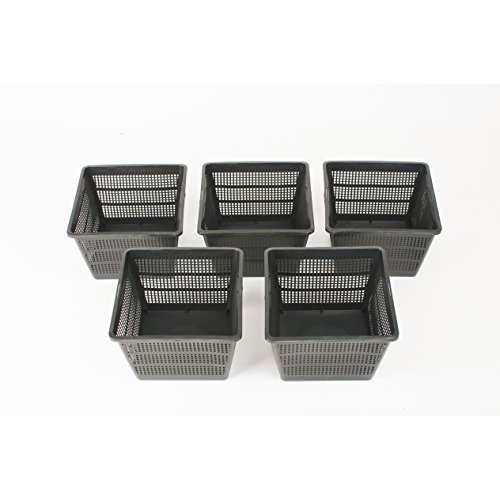
The collected pieces can be planted in deep pots and in other areas of the pond. The pots must be submerged in water when they are planted with seeds and as they grow, the water level is raised.
Obviously, the pots must be special for aquatic plants and it is essential that they allow rooting and that the soil is not watered by the pond.
How to prepare the land?
It is very convenient to use soil for aquatic plants. There are many specific substrates on the market. But it is also appropriate to make combinations of mineral garden soil with organic fertilizer. It gives a lot of benefit to the nymph so that it reaches a much healthier growth.
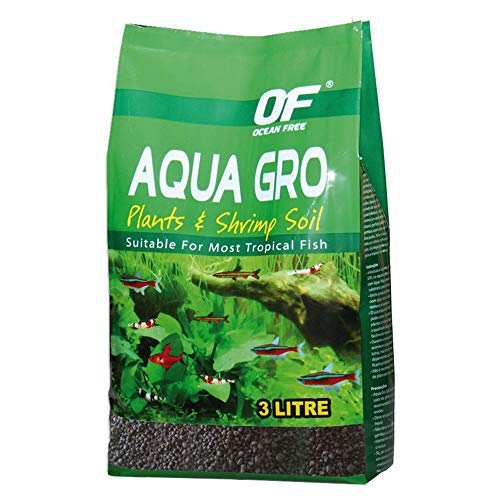
Another good recipe for the preparation of the land uses the following components: 1/3 leaf mulch previously bound with coarse sand, as well as 1/3 of garden soil and another similar amount of peat.
How do we sow a nymph step by step?
Planting nymphs step by step is quite an experience.
by seeds
During spring and summer, the seeds must be sown with support in a universal substrate placed directly in a glass of water. It is not a widely used technique but it works to obtain new varieties and achieve the propagation of new species.
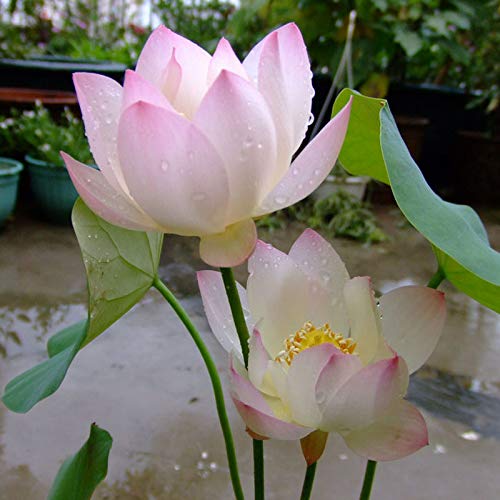
The seeds should be sown in sandy soil at a depth of about 3 meters. All aquatic water lilies mature their seeds in the water, seeds that are released until they float on the surface, but in reality they germinate at the bottom, so their collection is very complicated, almost impossible.
Water lilies in container or pot of water
Water lilies must remain with their roots submerged. On average, the ideal is to do it calculating about 50cm. Step by step, it’s really fun to plant them.
- Following the instructions of expert gardeners, mineral soil (from the garden) is taken and combined with a loose organic substrate, a much more effective mixture than that indicated exclusively for aquatic plants. This mixture should be made in a separate container and then added to the bottom of the pot of water lilies. It should be remembered that since this mixture will later remain at the bottom of the pot and will get muddy, it is advisable to mix little by little while adding the water, as if it were flour to make pasta or cake. Kneading the earth with consecutive movements is the most indicated.
- Then, two specimens of water lilies or nymphs are taken. They can be combined one tall with a yellow flower and a short one with a white flower. They are grabbed by the stems, always taking care not to damage the roots, and they are planted in the muddy soil, molding it until the entire rhizome of the bush is covered.
- Something very important follows: to prevent the earth from mixing with the water, clouding it. Immediately after planting the nymph in a potted cardboard mold with a hollow center. Previously, a vertical cut is made on any of its sides until reaching the hollow center, to facilitate handling and to open quickly. It is put into the pot until it reaches the bottom, pressing carefully so as not to damage roots or stems.
- A layer of oxygenating algae is placed on top of the cardboard moistened in the earth, converted into a paste of organic nutrients, a brilliant trick that brings life.
- Another important element follows: a generous supply of washed gravel sprinkled over the entire upper surface of the pot, without skimping on quantity.
- Finally, the pots are placed in a sealed container and filled with water, until the water lily is overflowing with water.
What care do nymphs need?
They are very generous plants, so much so that they even have medicinal applications but require some prior knowledge when grown in gardens or man-made ponds and lagoons. With the following tips it will be much easier to care for nymphs at home. Let’s see.
Location
An ideal pond should have a depth estimated between 40 to 100 cm, in a sunny place. Likewise, the plant can be placed in a flexible rubber bucket.
Lightning
A very important fact is related to light needs. Nymphs require growing spaces where there is plenty of sunlight for at least 6 hours a day.
Water
Another important condition is that the water must be clean, so that the plants always remain healthy. Additionally, it is also very important to change the water from time to time if you have your own pond at home.
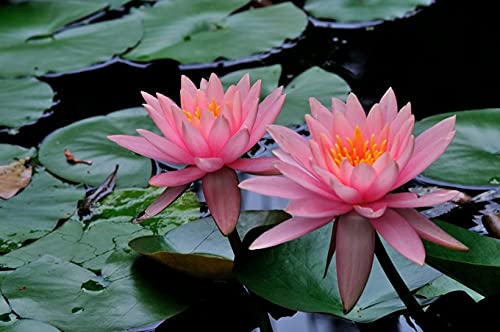
Every 3-4 days it is prudent to renew the water to prevent its leaves from changing color. Usually when they turn pale it is because the water is not clean. And since the nymphs love mud, you have to put soil on the bottom, taking great care that it never rises and muddies the surface.
Climate
The water lilies have a fairly high rusticity. They withstand frost and continuous cold up to 10ºC. Tropical species have a hardiness that allows them to tolerate temperatures between 21 to 27ºC.
Pass
Yes, the nymphs are also paid. It is recommended to do it in the warmer months of the year, with a frequency of only once a month. The form of subscriber is very simple: add a handful of bone meal.
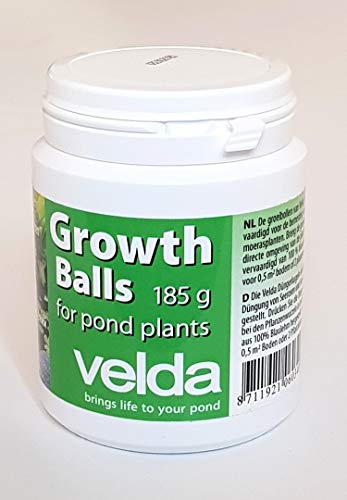
It also works with fertilized soil rich in phosphorous and nitrogen, useful for strengthening roots and promoting growth.
What pests and diseases affect nymphs?
They are very sensitive to the attack of black lice and other insects that are attracted by the microclimate that is generated in an artificial or natural pond.

The ideal way to combat them and prevent the proliferation of larvae of different species of insects is to add surface fish of different varieties to the pond. There is a very resistant African that tremendously helps the water lilies to live in peace.
Bibliographic references
- Water lilies in bloom, E BOLLE – Garden in Argentina.(26): 44-51, 1998-99., 1998 – sidalc.net
- Aquatic Plants, S Buczacki – 1999 – books.google.com
- Ponds and Water Gardens: An Essential Guide to Building Ponds, Water Gardens, Fountains, and Waterfalls in the Garden, M Álvarez – 2007 – books.google.com
- Conservation and management of aquatic flora and vegetation, SMC Bracamonte – Ecology, management and conservation of…, 2003 – dialnet.unirioja.es
- Plants for eternity, MB del Casal Aretxabaleta – Chungará (Arica), 2001 – scielo.conicyt.cl

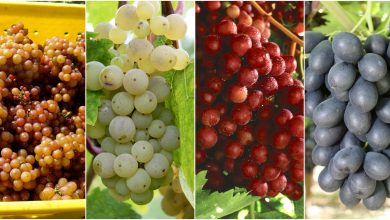
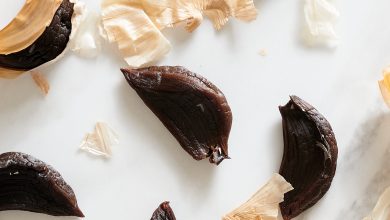
![Photo of Potato Virus: [Characteristics, Detection, Effects and Treatment]](https://www.complete-gardening.com/wp-content/uploads/2022/08/potato-virus-characteristics-detection-effects-and-treatment-390x220.jpg)
